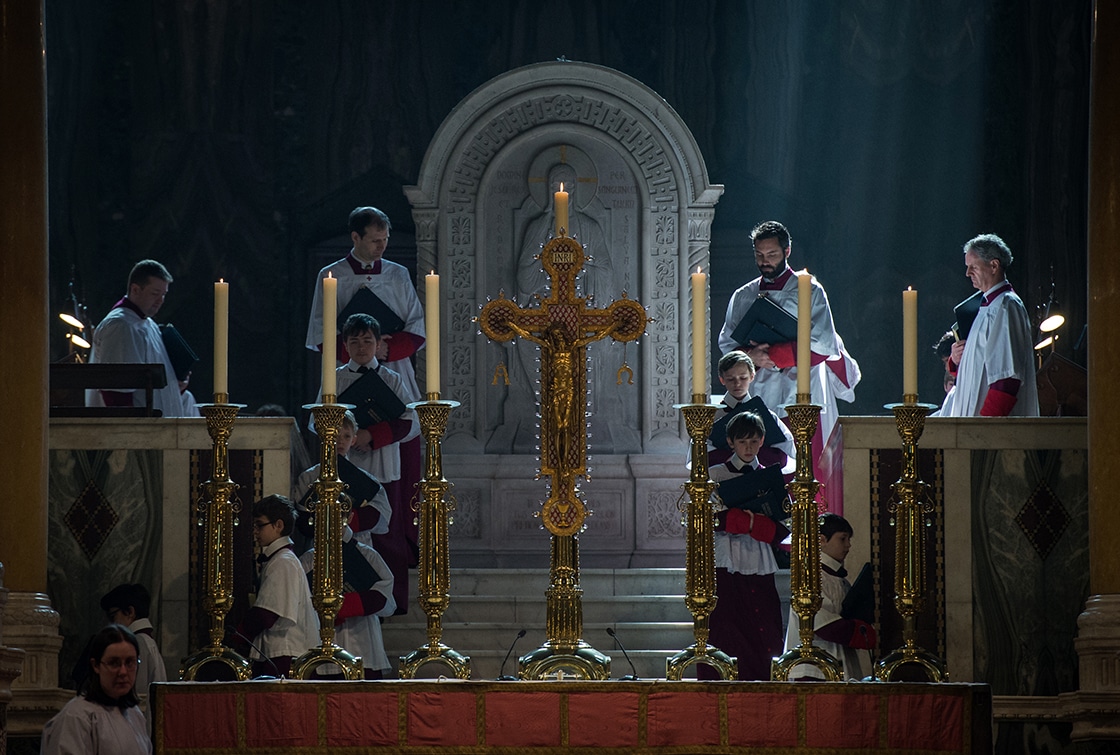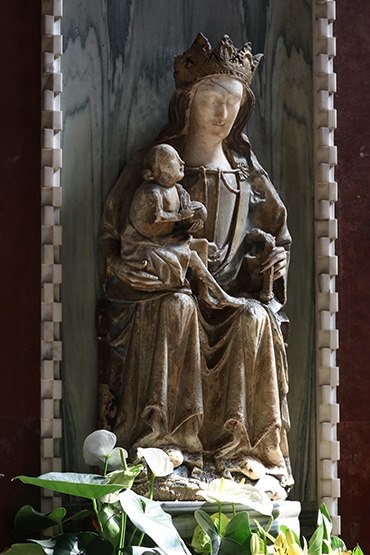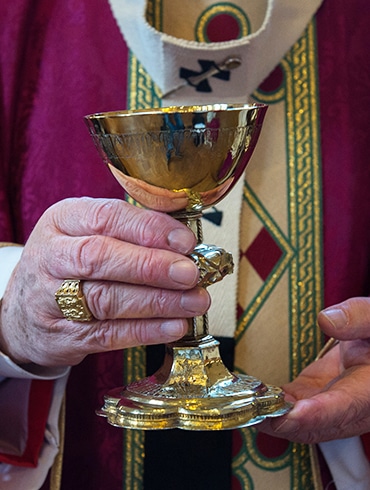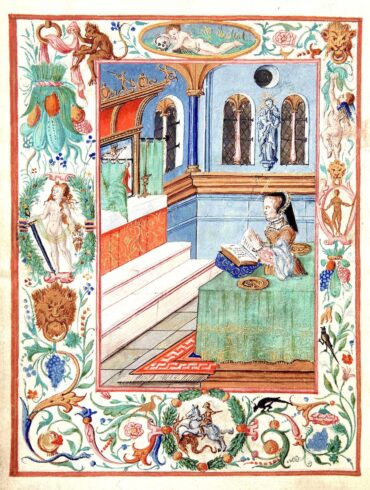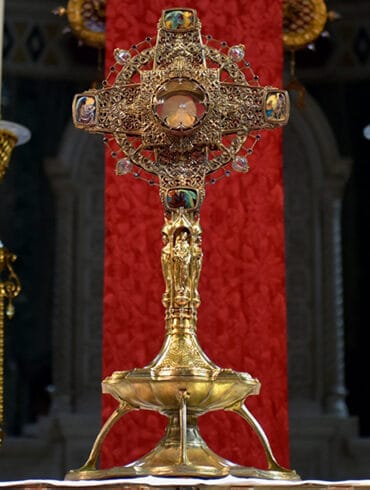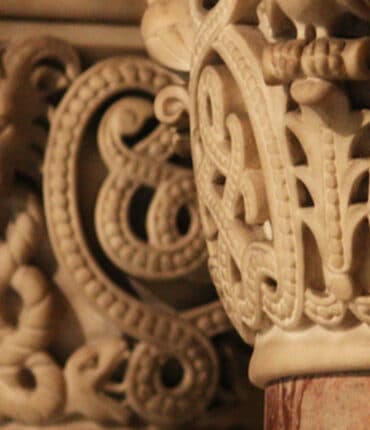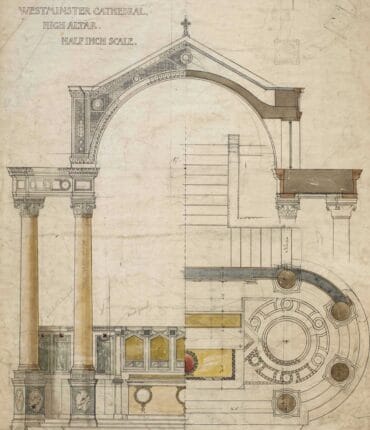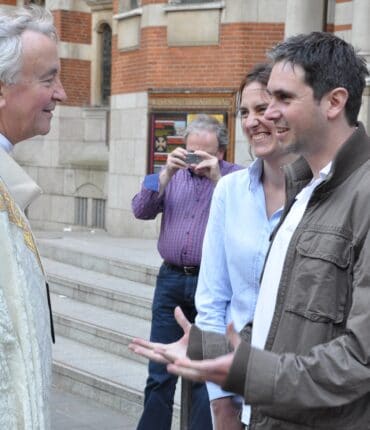
Treasures
As a new building, Westminster Cathedral had no legacy of art or treasure to inherit. The historic and beautiful items which the Cathedral treasures today are mainly gifts or commissions. These are not museum pieces. The beautiful vestments and Church vessels continue to be used, as they should be used, in the celebration of Mass.
The Altar Cross
Bentley wanted the high altar and baldacchino of the Cathedral to be the ‘crown of his work’ and the drawings he prepared for the sanctuary were his last. The beautiful altar cross of gilt bronze and enamel was designed after Bentley’s death by the firm he founded, Bentley, Son and Marshall. It was used for the first time at the Mass of Consecration in 1910. Find out more about the Cathedral’s history
The cross is 7ft 3in in height and 2ft 9in wide and matches the candlesticks on either side. It is very heavy. Pendants of pear-shaped crystal surround the central crucifix which is cast in bronze; the arms of the cross are decorated with diamond-shaped lozenges of red enamel.
The first and last letters of the Greek Alphabet, Alpha and Omega, hang from the arms of the cross to symbolise the words from Revelation 22:13: ‘I am the Alpha and the Omega; the first and the last, the beginning and the end.’
The cross is best seen in the morning, especially in spring and autumn, when the rising sun streams through the east windows of the apse illuminating the crystal surround and creating a halo effect.
